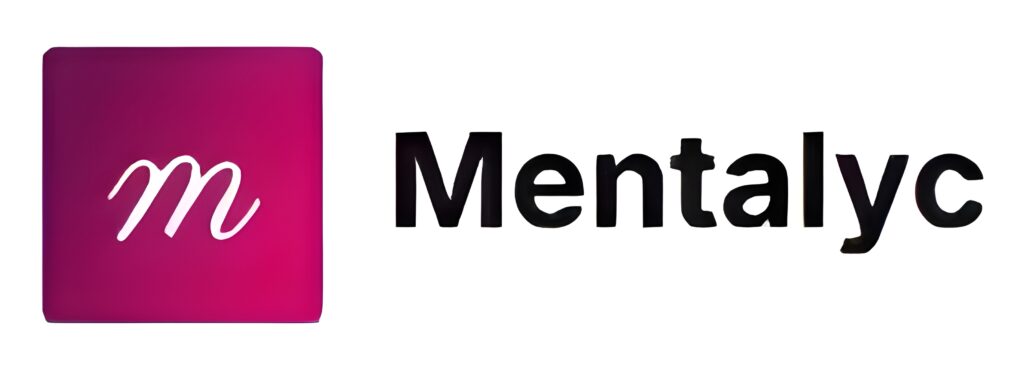Have your progress notes written for you automatically
In social work, documentation isn't just a tedious task—it's an important part of effective practice. Think of it as the backbone of quality client care, ensuring everything runs smoothly, stays accountable, and meets legal standards. For social workers managing multiple cases and navigating complex support systems, keeping detailed records is both challenging and essential.
This "cheat sheet" for social work documentation is packed with insights on why documentation is crucial, what key elements to include, how to follow best practices, common pitfalls to dodge, and tools to make your life easier. When you finish reading, you'll have a solid plan to boost your documentation skills, leading to better client outcomes and a more efficient professional life!
The Importance of Accurate Documentation
Accurate documentation in social work isn't just a bureaucratic chore—it's a cornerstone of professional practice that ensures clients receive the best care possible. Let's dive into why keeping precise and comprehensive records is so essential.
Legal and Ethical Considerations
Navigating the intricate web of laws, regulations, and ethical standards in social work, accurate documentation acts as a shield for both clients and practitioners:
Legal Protection: In case of legal scrutiny, well-maintained records showcase adherence to professional standards and justify clinical decisions.
Ethical Compliance: Proper documentation ensures transparency and accountability, aligning with the ethical principles of the social work profession.
Informed Consent: Detailed records of client consent for various social work interventions safeguard both the client's rights and the social worker's integrity.
Risk Management: Comprehensive documentation helps identify and mitigate potential risks, protecting both clients and practitioners.
Enhancing Client Care
Accurate documentation isn't just about ticking boxes—it's about providing top-notch care to clients:
Continuity of Care: Detailed records ensure that any professional involved in a client's case can quickly grasp the client's history, needs, and progress.
Treatment Planning: Accurate documentation aids in developing and refining effective treatment plans based on a clear understanding of the client's situation and progress.
Progress Tracking: Well-maintained records allow social workers to track client progress over time, identifying patterns and adjusting interventions as needed.
Crisis Management: In emergencies, having access to comprehensive client information is crucial for making quick, informed decisions.
Facilitating Communication Among Professionals
Social work often involves teamwork across various professionals and agencies. Precise documentation makes this collaboration seamless:
Inter-professional Communication: Clear records ensure all professionals involved in a client's care are on the same page, reducing miscommunication and errors.
Referrals and Transitions: When referring clients to other services or transitioning care, comprehensive documentation ensures a smooth handover of information.
Supervision and Consultation: Accurate records facilitate meaningful supervision sessions and enable effective consultation with colleagues on complex cases.
Quality Assurance: Well-documented cases allow for systematic review and quality improvement initiatives within social work organizations.
Social Work Documentation Cheat-Sheet
To ensure thorough and effective documentation, social workers should include several key elements in their records. Let’s break down each component:
Client Information
Basic Demographics:
Full legal name
Date of birth
Gender identity
Ethnicity and race (if relevant to care)
Marital status
Employment status
Education level
Contact Information:
Current residential address
Phone number(s)
Email address
Emergency contact details
Preferred method of communication
Assessment Notes
Initial Assessments:
Reason for referral or self-presentation
Presenting problems or concerns
Mental status examination
Social history
Family dynamics
Strengths and resources
Risk factors (e.g., suicide, self-harm, abuse)
Preliminary diagnosis (if applicable)
Ongoing Assessments and Updates:
Changes in the client's situation or presentation
New information relevant to treatment
Updated risk assessments
Revisions to diagnosis or treatment approach
Treatment Plans
Specific, Measurable, Achievable, Relevant, and Time-bound (SMART) goals
Short-term and long-term objectives
Client's own goals and priorities
Methods and Interventions:
Therapeutic approaches to be used
Frequency and duration of sessions
Referrals to other services or resources
Homework or between-session activities
Medication management (if applicable)
Progress Notes
Session Summaries:
Date, time, and duration of session
Type of session (e.g., individual, family, group)
Topics discussed
Interventions used
Client's response to interventions
Plan for the next session
Client Progress and Setbacks:
Observable changes in the client's behavior or situation
Progress toward treatment goals
Challenges or obstacles encountered
Client's self-reported improvements or difficulties
Case Management Notes
Coordination with Other Services:
Communication with other professionals or agencies
Outcomes of team meetings or case conferences
Updates from other service providers
Referrals and Follow-ups:
Details of referrals made (date, reason, agency)
Follow-up actions taken
Outcomes of referrals
Discharge Summaries
Summary of Services Provided:
Duration of treatment
Overview of interventions used
Key milestones or achievements
Reason/s for Discharge and Future Recommendations:
The rationale for ending services
Client's status at discharge
Recommendations for ongoing support or future interventions
Follow-up plan (if applicable)
By incorporating these essential components into your documentation practices, you can ensure that your records are comprehensive, clear, and useful for both current and future reference.
Best Practices for Better Documentation
Implementing best practices in documentation not only keeps you in line with professional standards but also boosts the overall quality of your social work practice. Here are some key strategies to streamline your documentation process:
Use Clear and to the Point Language
When avoiding jargon, stick to plain clinical language that clients and professionals from various fields can easily understand. If you must use technical terms, add brief explanations. Always think about who might read your documentation (e.g., courts, other professionals) and adjust your language accordingly.
Writing objectively is important. Focus on observable behaviors and factual information. Use quotation marks to indicate direct client statements. Steer clear of assumptions or personal opinions unless they're marked as such.
The Best Time
Documenting immediately after sessions is vital. Set aside dedicated time after each client interaction for documentation. Use brief notes or voice recordings during sessions to capture key points. Develop a routine that prioritizes timely documentation to ensure accuracy and completeness.
Keeping records up to date is also essential. Review and update the client files on regular basis Create a system for flagging information that needs follow-up or updates. Schedule periodic, comprehensive reviews of each case.
Confidentiality and Security
Protecting client privacy is paramount. Follow HIPAA regulations and other relevant privacy laws. Use client identifiers or codes instead of full names in shared documents. Always obtain informed consent before sharing information with third parties.
For secure storage of documents, use password-protected and encrypted systems for digital records. Implement strict access controls for both physical and digital files. Regularly back up electronic records and store physical documents in locked cabinets.
Consistency
Standardizing forms and formats can greatly enhance your documentation process. Develop or adopt standardized templates for different types of documentation. Ensure all team members are trained to use these templates consistently. Regularly review and update templates to reflect best practices and regulatory changes.
Regular audits and reviews are key for maintaining high standards. Conduct periodic internal audits of documentation practices. Implement peer review processes for quality assurance. Use audit findings to inform ongoing training and improvement initiatives.
Common Documentation Pitfalls and How to Avoid Them
Even experienced social workers can fall into documentation traps. Being aware of these common pitfalls can help you avoid them:
Incomplete Records
Ensuring comprehensive documentation is essential. Use checklists to make sure all necessary information is included. Allocate sufficient time for documentation to avoid rushing and missing details. Regularly review records for completeness and fill in any gaps promptly.
Subjectivity and Bias
Sticking to factual and observable information is crucial. Focus on describing what you see and hear, not what you think or feel about the client. If you include interpretations, clearly label them as such and provide supporting evidence. Be aware of personal biases and how they might influence your documentation.
Overuse of Abbreviations
Ensuring clarity and understanding is important. Limit the use of abbreviations, especially those that might be ambiguous. Provide a key or glossary for necessary abbreviations. Consider who might read the documentation in the future and ensure it's comprehensible to them.
Lack of Follow-Up
Documenting all follow-up actions and outcomes is vital. Implement a system for tracking pending follow-up items. Document both successful and unsuccessful follow-up attempts. Record the outcomes of all referrals and interventions.
The Power of Digital Documentation Systems
Utilizing digital documentation systems can revolutionize your practice. The benefits of Electronic Health Records are immense. They improve accessibility and sharing of information, enhance security features, offer automated reminders and alerts, and integrate with other healthcare systems. A popular software option to consider is Mentalyc, which can streamline your documentation process and meet the specific needs of social work practice.
Conclusion
As we have explored in this guide , effective documentation is a cornerstone of excellent social work practice. It ensures legal and ethical compliance, enhances client care, and facilitates professional communication. Social workers can significantly improve their documentation processes by incorporating the essential components outlined in this guide, implementing best practices, avoiding common pitfalls, and utilizing appropriate tools and resources.
Remember, good documentation is not just about meeting regulatory requirements—it's about providing the best possible care for your clients. It allows you to track progress, make informed decisions, and ensure continuity of care. As you refine your documentation skills, you'll likely find that it becomes an invaluable tool in your social work practice, enhancing both your efficiency and the quality of care you provide.
Embrace these practices, stay open to ongoing learning, and don't hesitate to seek support or resources when needed. With dedication and the right approach, you can master the art of social work documentation, ultimately benefiting both your professional practice and the clients you serve.










